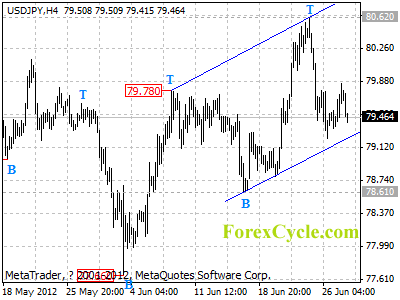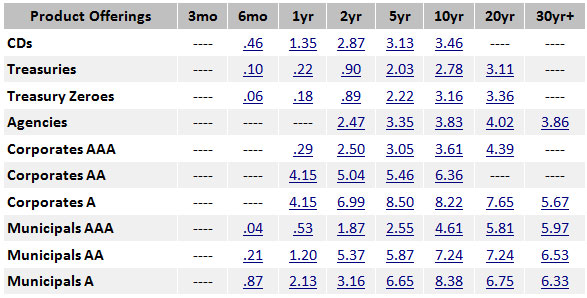Investors seem to have finally learned something from the European crisis: “Expect nothing good”.
It now costs Spain more to borrow money over three months than it costs the German economy to borrow over 30 – yes, 30 – years. Spain sold just over €3bn of debt at auction at a 2.36% yield, up from 0.846% just a month ago.
At this rate, the Spanish government would be better off calling up Wonga.com for a little something to tide it over until its next payslip comes in, than asking the markets for money.
And judging by the progress made by Europe’s leaders so far, the chances of someone setting up a peer-to-peer lender for sovereign states before we get any sort of deal on how to save the eurozone doesn’t seem all that far-fetched…
The Outcome for Europe is Completely Unpredictable
A key element of investing is to balance risk and reward. You size up the odds of a given outcome. You look at the pay-off you’d get if it happens. You look at the consequences if it doesn’t. If the risk/reward pay-off looks attractive relative to the odds, then you invest. Otherwise you don’t.
Sure, plenty of investors don’t do anything that scientific. Human beings have all manner of psychological problems and an incredibly poor grasp of probability, so we’re not well-designed for investing.
But in aggregate, markets tend to have a fair stab at predicting outcomes. They’re not perfect, and sometimes they miss the obvious until it hits them over the head (as was the case with equity markets in 2007 and 2008). But they’re better than nothing.
The problem markets have right now, though, is that the European situation doesn’t lend itself terribly well to this sort of risk/reward analysis. We’re dealing with politics here. Anything could happen.
As a result, it’s clear from looking at the currency markets in particular, that no one is keen to take big positions ahead of the European meeting. No wonder. The outcomes are massively polarised.
No Eurobond Support From the German Economy
If Europe somehow comes out of this meeting with a genuine roadmap for reform, and creates some sort of bail-out fund that sticks, then markets could rocket. That would hurt anyone holding short positions.
But if they come out with the usual triumphal talk backed by nothing more than half-hearted, reheated versions of previous deals, then we’re still stuck in crisis mode. Things can only get worse until the next summit. Overall, that would leave ‘risk-on’ assets looking vulnerable, and investors keen to stick with ‘safety-first’ assets.
Worse still, if Germany decides to tell the rest where to shove their bail-outs, or one of the troubled countries throws a real wobbly and walks out, there could be a nasty collapse. Some of Europe’s biggest economies could end up being totally locked out of the lending markets. ‘Risk-on‘ would take a dive, and the dollar would surge.
That seems unlikely in the very short-term. But it’s not completely out of the question. Reportedly Angela Merkel has said that there won’t be joint Eurobonds (ie Germany acting as guarantor for everyone else) “in my lifetime”. A more sensationalist interpretation might be “over my dead body”.
The German Economy Can’t Afford to Play Sugar Daddy
You can see why Ms Merkel is concerned. Credit rating agency Egan-Jones has downgraded Germany’s credit rating by a notch to A+. Egan-Jones is not one of the ‘big three’ agencies, all of whom rate the German economy much higher. But among the smarter money, Egan-Jones commands all the more respect for that.
Egan-Jones makes the very fair point that regardless of the eurozone outcome, Germany will be left with “massive, additional, uncollectible receivables”. In effect, the German economy is owed €700bn by other central banks in Europe. The ratings agency reckons it stands to lose 50% of that.
And this doesn’t take into account German banks’ exposure to the rest of Europe. The German banking system is at least as broke as all the rest, so if the government has to stand behind it, that’ll make Germany’s fiscal picture look even worse.
In a way, Germany just needs to choose how it’s going to lose the money. So far, the path of least resistance has been to prop up troubled countries in order to avoid recognising the underlying banking crisis. But maybe, faced with the prospect of explicitly guaranteeing Spain’s debts, Germans would rather vote with their feet, and spend the money propping up their own banking system.
Of course, the most sensible thing to do – assuming you want the euro project to continue – would be to decouple the banks from the sovereigns. Spain’s big problem is that its banks are clearly bust, and the Spanish government can’t afford to stand behind them.
So if Europe clubbed together and agreed to bail out Spain’s banking sector directly, rather than going through the Spanish government, then a lot of the fear around Spain’s sovereign bonds would disappear.
But selling the idea of propping up Spanish banks to taxpayers in Germany and other countries probably isn’t any easier than selling the idea of propping up the state as a whole.
What can you do?
Of course you can bet on a specific outcome. But if you’re more an investor than a short-term trader, then the simple answer is, sit tight and try not to panic too much.
John Stepek
Contributing Editor, Money Morning
Publisher’s Note: This is an edited version of an article that originally appeared in MoneyWeek (UK)
From the Archives…
Fortescue’s Fight Against the State
2012-06-22 – Kris Sayce
Don’t Let the Fed Fool You, This Isn’t the Time to Abandon the Market
2012-06-21 – Kris Sayce
An Addicted Stock Market About to Suffer Withdrawals
2012-06-20 – Murray Dawes
Why Liquefied Natural Gas Makes Australia The Next Energy Hotbed
2012-06-19 – Don Miller
Why Greece is Just a Side-Show to the Economies of Spain and Italy
2012-06-18 – Dr. Alex Cowie



